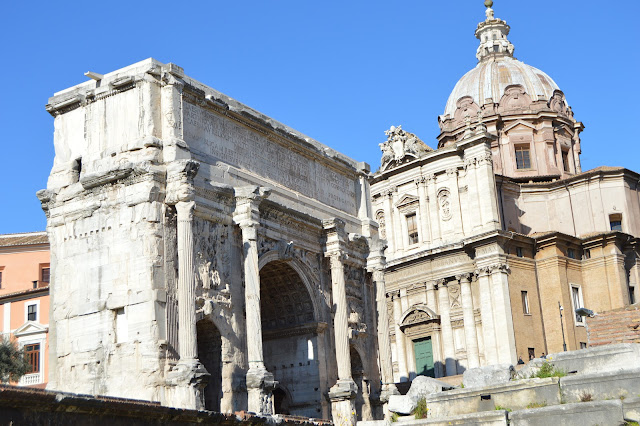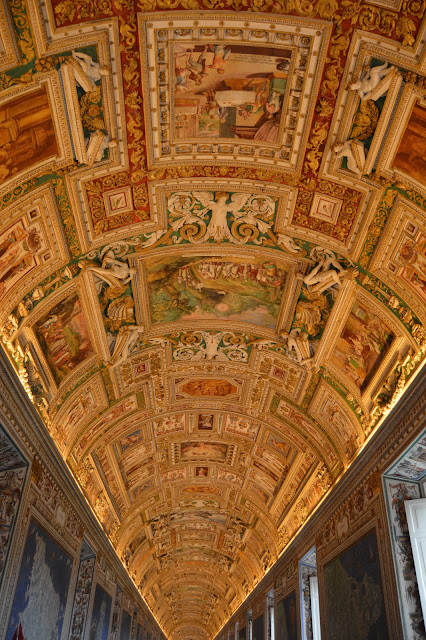ROME: THE ETERNAL CITY
Influential art, architecture and culture on display, everywhere you turn. We walked all day, everyday, until we absorbed as much history and beauty as we possibly could and stopped along the way to eat, drink and shop. I can't say that our 'Roman Holiday' was not inspired by the Audrey Hepburn film, or references to The Lizzie McGuire Movie were not made, as of course this is a city 'where dreams are made of'. I was ready to pack up my life and move instantly - who wouldn't, really?
Enjoy our little guide to Rome!
WHERE TO STAY
We stayed at the Atlante Star Hotel, a lovely 4 star luxury hotel near the Vatican, which was also situated close to the Castel Sant'Angelo, River Tiber and just a short walk to the centre. Our favourite was the amazing view from the rooftop of the hotel, which allowed you to see deep into the heart of Rome.
WHERE TO WALK
We were quite determined to walk as much as possible, but we also took public transportation to get around the city. Rome is a very walk-able city and as we were only about 1-2km from all the sights from our hotel, we managed to walk to most places. I suggest a comfortable pair of shoes as the streets are cobblestoned and wearing heels is not easy.
CASTEL SANT'ANGELO
The Mausoleum of Hadrian or the Castle of the Holy Angel, is a towering cylindrical building in Parco Adriano. It was initially commissioned by the Roman Emperor Hadrian as a mausoleum for himself and his family. The building was later used by the popes as a fortress and castle, and is now a museum. The Castle was once the tallest building in Rome.
PIAZZA NAVONA
The ancient Romans came here to watch the agones or games, and hence it was known as Circus Agonalis or competition arena. It is believed that over time the name changed to in avone to navone and eventually to navona.
FONTANA DI TREVI
The largest Baroque fountain in the city and one of the most famous fountains in the world. Films have featured it, runways have been built on it, millions of coins and wishes have been thrown into it. Legend holds that in 19 BC, thirsty Roman soldiers were guided by a young girl to a source of pure water thirteen kilometres from the city of Rome. The discovery of the source led Augustus to commission the construction of a twenty-two kilometre aqueduct leading into the city, which was named Aqua Virgo, or Virgin Waters, in honour of the legendary young girl. The aqueduct served the hot Baths of Agrippa, and Rome, for over four hundred years. An estimated 3,000 Euros are thrown into the fountain each day and the money has been used to subsidize a supermarket for Rome's needy.
TEATRO DI MARCELLO
The Theatre of Marcellus is an ancient open-air theatre built in the closing years of the Roman Republic. At the theatre, locals and visitors were able to watch drama and song performances. Today its ancient edifice in the rione of Sant'Angelo, once again providing one of the city's many popular spectacles. Space for the theatre was cleared by Julius Caesar, who was murdered before its construction could begin. The theatre was so far advanced by 17 BC that part of the celebration of the ludi saeculares took place within the theatre; it was completed in 13 BC and formally inaugurated in 12 BC by Augustus.
COLOSSEUM
The original name for the Colosseum, Flavian Amphitheatre, comes from Latin for its association with the Flavius family name, following the reign of Nero. Construction began under the emperor Vespasian in 72 AD and was completed in 80 AD under his successor and heir Titus. The Colosseum was constructed in the city centre; placing it both symbolically and precisely at the heart of Rome.
ROMAN FORUM & PALATINO HILL
Citizens of the ancient city referred to this space, originally a marketplace, as the Forum Magnum, or simply the Forum. It was for centuries the center of Roman public life: the site of triumphal processions and elections; the venue for public speeches, criminal trials, and gladiatorial matches; and the nucleus of commercial affairs. Statues and monuments commemorated the city's great men. The teeming heart of ancient Rome, it has been called the most celebrated meeting place in the world, and in all history. Located in the small valley between the Palatine and Capitoline Hills, the Forum today is a sprawling ruin of architectural fragments and intermittent archaeological excavations.
PIAZZA DI SPAGNA
At the bottom of the Spanish Steps, is one of the most famous squares in Rome. It owes its name to the Palazzo di Spagna, seat of the Embassy of Spain. We stopped and sat down to eat our gelato and take in some sun on the steps and then made our way to the beautiful luxury shops on the Via di Spagna.
VILLA BORGHESE
Villa Borghese is a landscape garden in the naturalistic English manner, containing a number of buildings, museums, a zoo and other attractions. The gardens were developed for the Villa Borghese Pinciana built by the architect Flaminio Ponzio, developing sketches by Scipione Borghese, who used it as a villa suburbana, a party villa, at the edge of Rome, and to house his art collection. The gardens as they are now were remade in the early nineteenth century.
VATICAN
Within Vatican City are religious and cultural sites such as St. Peter's Basilica, the Sistine Chapel and the Vatican Museum. They feature some of the world's most famous paintings and sculptures. The museum was absolutely filled to the brim with tourists, even though we went early, and our guide said that it was even busier in the summer - I can't even imagine! It felt like we zipped through (we spent about 2 hours at the Vatican) but to stop and look at everything in detail would have taken more than one day. There are so many sculptures, tapestries, maps, beautiful ceilings and things to see - would need a whole day here to read about the history of everything presented inside.
WHAT TO EAT
If you are like me and get hungry every couple of hours, then you can manage to eat at a variety of restaurants along the way. We didn't really pay too much attention to reviews of places, we just chose based on how hungry we were and what we were in the mood for. Of course, gelato was a daily must have and our favourites were from Giolitti and Venchi (the walls are dripping of chocolate!). My mouth waters just thinking about them! Pasta, gnocchi, pizza, seafood, dolce (sweets) with cappuccino for breakfast, wine and aperol spritz were a few of our go-to meals and drinks, but everything was amazing.
ROAM AROUND ROME
It's lovely to just walk around the city with no agenda in mind and discover churches and walk through passages along the way. Don't only look ahead of you but look up as Rome is a feast for your eyes, not only for your stomach!
Until next time...
Photos property of MR

























































































No comments
Post a Comment